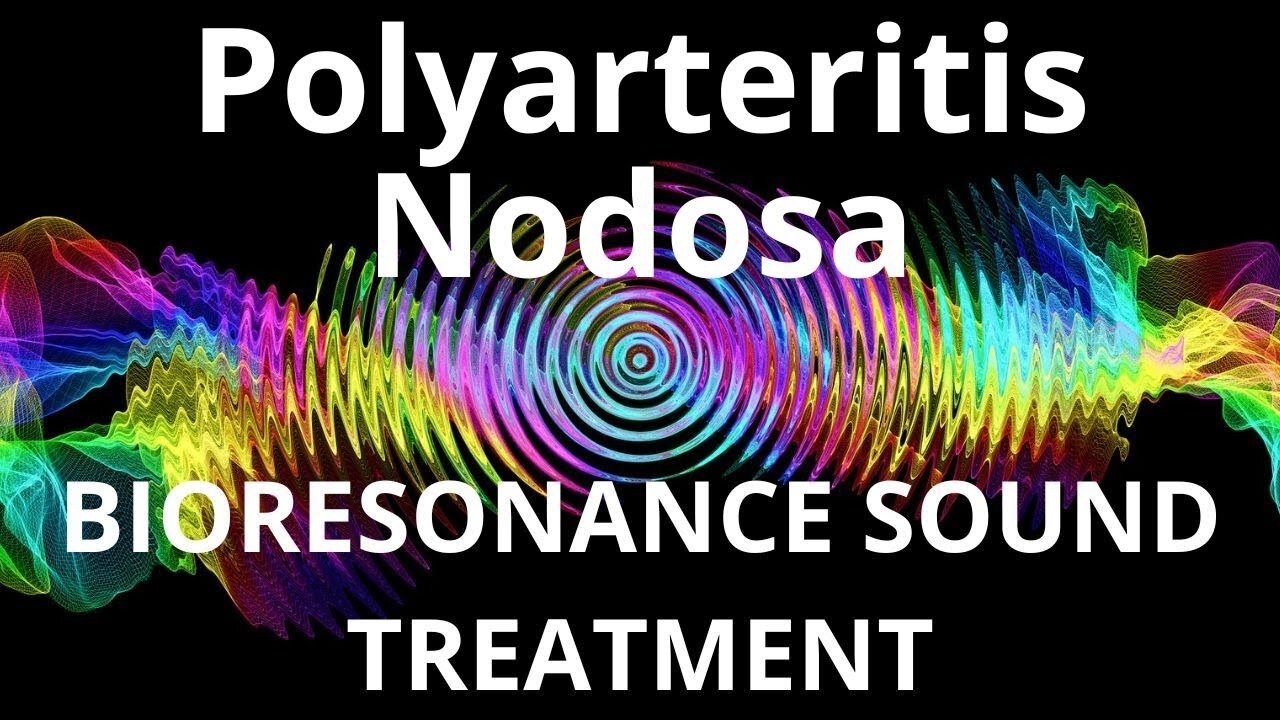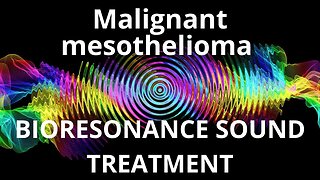Premium Only Content

Polyarteritis Nodosa_Sound therapy session_Sounds of nature
#bioresonance #healingenergy #healingfrequencies #resonantfrequencysoundtherapy #PolyarteritisNodosa #adjunctivetreatment #traditionalmedicine #benefits
Polyarteritis Nodosa (PAN) is a rare autoimmune disease that affects the medium-sized arteries, leading to inflammation and damage in various organs. While traditional medicine plays a crucial role in managing PAN, there is emerging evidence suggesting that incorporating resonant frequency sound therapy as an adjunctive treatment can offer additional benefits. In this article, we will explore the potential advantages of combining resonant frequency sound therapy with traditional medicine for the management of Polyarteritis Nodosa.
Resonant frequency sound therapy involves the use of specific sound frequencies to promote healing and restore balance within the body. By applying these frequencies, which are known to resonate with different organs and tissues, sound therapy aims to stimulate cellular repair, reduce inflammation, and enhance overall well-being. When used as an adjunctive treatment for PAN, resonant frequency sound therapy can complement traditional medicine by addressing underlying imbalances and promoting a harmonious healing process.
Resonant frequency sound therapy can enhance the effectiveness of traditional medicine in managing Polyarteritis Nodosa. By targeting the affected areas with specific frequencies, sound therapy aims to improve blood flow, reduce inflammation, and support immune system regulation. This complementary approach can potentially enhance the overall response to treatment, leading to better symptom management and disease control.
PAN is characterized by widespread inflammation, which can cause significant pain and discomfort. Resonant frequency sound therapy has shown promise in reducing inflammation by promoting the release of anti-inflammatory substances within the body. Additionally, the gentle vibrations produced during sound therapy sessions can help relax muscles, alleviate pain, and improve overall comfort for individuals with PAN.
Polyarteritis Nodosa involves an overactive immune system attacking healthy tissues. Resonant frequency sound therapy aims to restore a state of balance and harmony within the body, including immune system regulation. By promoting relaxation and reducing stress, sound therapy can help modulate the immune response, potentially alleviating the excessive immune activity associated with PAN.
Living with a chronic illness like PAN can take a toll on emotional well-being. The stress, anxiety, and uncertainty can impact both mental health and overall quality of life. Resonant frequency sound therapy has been found to induce deep relaxation, reduce stress levels, and promote a sense of calm and well-being. By addressing the emotional aspects of PAN, sound therapy can provide individuals with a valuable tool for managing their condition holistically.
Conclusion:
While traditional medicine remains the primary approach for managing Polyarteritis Nodosa, the integration of resonant frequency sound therapy as an adjunctive treatment offers promising benefits. By leveraging the healing power of sound, this therapy can support immune system function, reduce inflammation, alleviate pain, and enhance emotional well-being.
TO ACHIEVE A POSITIVE RESULT, DAILY LISTENING TO VIDEOS IS REQUIRED.
I wish you health and prosperity!
You can purchase unique medicines in my store:
https://store11998180.company.site/
You have the opportunity to support the channel:
https://destream.net/live/RadSiarAl/donate
-
 30:00
30:00
BIORESONANCE SOUND THERAPY
1 month agoMalignant mesothelioma _ Sound therapy session _ Sounds of nature
1351 -
 LIVE
LIVE
Barry Cunningham
3 hours agoPRESIDENT TRUMP HAS TAKEN THE MONSTER AWAY FROM THE LEFT! HORROR STORIES WON'T WORK ANYMORE!
2,903 watching -
 1:07:59
1:07:59
BonginoReport
3 hours agoBoston Mayor Defies Trump, Protects Illegals - Nightly Scroll w/ Hayley Caronia (Ep.115)
62.5K34 -
 40:45
40:45
Donald Trump Jr.
4 hours agoPeace by Peace: Solving One Problem After Another | Triggered Ep.268
27.1K34 -
 LIVE
LIVE
GritsGG
11 hours agoWin Streaking! Most Wins 3390+ 🧠
134 watching -
 1:08:29
1:08:29
TheCrucible
3 hours agoThe Extravaganza! Ep. 24 (8/19/25)
62.7K10 -
 4:22:25
4:22:25
sophiesnazz
4 hours agoLETS TALK ABOUT BO7 !socials !specs
3.18K -
 1:27:30
1:27:30
Redacted News
4 hours ago"There will be consequences!!!" Trump issues big threat to Putin ahead of peace summit | Redacted
86.8K141 -
 LIVE
LIVE
Amish Zaku
2 hours agoWar Thunder - Tank Tuesday
109 watching -
 1:27:05
1:27:05
Kim Iversen
3 hours agoIsrael DEMANDS X Remove Posts and X COMPLIES | Socialist Groceries Coming To A Store Near You!
40.9K82